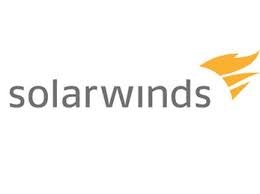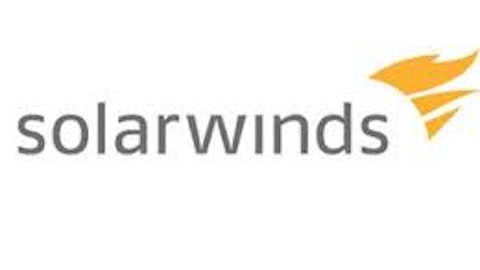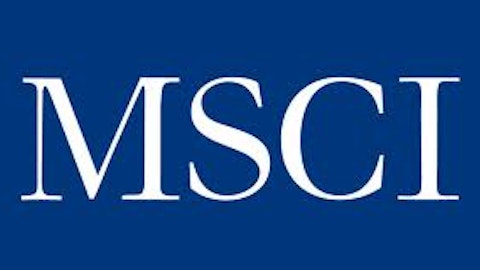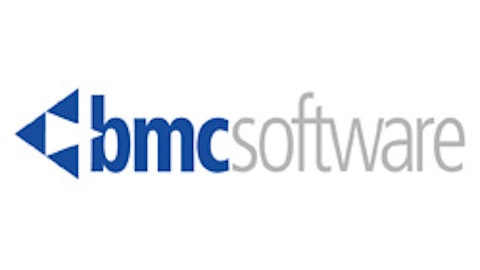Data surrounds us, but we only perceive a small fraction of it.
Companies like SolarWinds Inc (NYSE:SWI) and Splunk Inc (NASDAQ:SPLK) empower customers to gain dominion over complex digital networks and turn data from numerous disparate sources into actionable business insight. Think banks aggregating financial activities from numerous sources (ATM, wire transfer, online banking, credit card transactions) to detect fraud or identifying anomalies across network devices in order to quickly guard against malicious attacks that could endanger customers’ accounts or personal information.
Low-cost model

Further, SolarWinds Inc (NYSE:SWI) sells from the inside: it does not have sales reps in the field, wining and dining prospects’ CIOs. Instead, it spends sales and marketing dollars (only 27% of revenue!) driving prospects to its website, where they can freely download full-feature trials. Thereafter, the inside sales team quickly up-sells prospects to the full product, with 70% of deals closing in less than 20 days.
SolarWinds Inc (NYSE:SWI) calculates its total addressable market is an astonishing $65 billion. At a market cap of just under $3 billion and less than $300 million in annual revenue, this represents huge room to grow. A subset of this $65 billion comes from attaching additional products to current customers, to the tune of $11 billion if the company can cross-sell all its products to every current customer, admittedly a tall order.
Balancing revenue growth and profitability
Splunk Inc (NASDAQ:SPLK) develops software to help companies capture, search, and make business decisions based on large amounts of disparate machine data. The company spends 20% of revenue on R&D and over 60% on sales and marketing; these higher costs help explain why Splunk has lost money each quarter since going public.
With a market cap of $4.8 billion, Splunk Inc (NASDAQ:SPLK) is valued at more than 22 times Trailing Twelve Month (TTM_ revenue. SolarWinds Inc (NYSE:SWI) has a smaller market cap at just under $3 billion, yet it has TTM revenue of $280 million (a 10x multiple). Further, SolarWinds is profitable, earning $81 million over the past year (a P/E ratio of 34), while Splunk has lost $36 million over the same period, though it expects to show an operating profit by the end of this fiscal year.
One challenge both companies face is how to accelerate revenue growth. SolarWinds Inc (NYSE:SWI) just splashed the cash on a company you’ve never heard of, buying N-able Technologies for $124 million, or about 5 times N-able’s 2012 revenue. SolarWinds hopes the acquisition will allow it to expand its reach by targeting Managed Service Providers (MSPs), companies that provide IT services to many small businesses. The short-term problem is that N-able is not profitable, so combining N-able’s operating results into SolarWinds’ will result in slightly higher revenue but lower earnings per share.
Both companies have solid products that are rated highly both by customers and industry analysts. For instance, Gartner honored Splunk Inc (NASDAQ:SPLK) as a market leader in its Security Information and Event Management (SIEM) Magic Quadrant. While SolarWinds landed in the “Challengers” category, indicating a lower ability to execute and a less convincing vision, it had the honor of being selected Forbes‘ 2012 Best Small Company in America. Not to be outdone, Splunk Inc (NASDAQ:SPLK) was named the fourth most innovative company in the world by Fast Company. Clearly, both companies are doing something right.
Sales strategy
SolarWinds Inc (NYSE:SWI)’s average selling price (ASP) decreased significantly in its latest quarter. The company believes this decrease suggests its sales reps are above capacity and selling fewer products per transaction because they feel rushed. Each sales rep closed on average 85 transactions last quarter, which is greater than the company’s goal of one closed sale per business day, or 65 per quarter. The company plans to combat this by hiring new sales reps, who should be fully trained within 30 days and able to help increase both sales volume and average price per transaction nearly immediately. The risk is that new sales hires will not be effective contributors within 30 days such that personnel costs will rise without a significant increase in revenue.
In contrast, Splunk Inc (NASDAQ:SPLK) spends a significantly larger percentage of revenue on its sales team, nearly two-thirds of which is in the field, meeting face-to-face with prospects and generating demand. Splunk’s product requires greater domain expertise and has a longer, more complex sales cycle than SolarWinds. As such, sales reps take from 6 to 12 months to develop into full contributors. Due to the investments in its product and sales force, Splunk does a better job of closing big deals, with more than 100 deals in the most recent quarter above $100,000, including numerous deals above $1 million, while very few of SolarWinds’ deals reach six figures, and no deals reach seven figures.
Splunk is shifting its focus to C-level executives and VPs with the goal of offering services that solve a broad range of use cases, much more than just IT infrastructure logging. An example of an upscale use case would be security as a cloud-based service, where Splunk adds value recommending best practices from its unique view of security trends across its large customer base. SolarWinds Inc (NYSE:SWI), on the other hand, specifically creates lower-priced products that it can target to rank and file IT professionals (the System or Network Administrator) who can purchase product with only 1 level of management approval, resulting in a faster sales cycle.
Conclusion
In summary, these two companies represent opposing approaches to selling IT management and security software. One aims to keep costs low, increase sales transactions, sell to front-line IT professionals, and only enter mature markets where it can undercut competitors. The other is on the vanguard, spending large sums on sales, marketing, and R&D, defining a new market where it will solve business executives’ increasingly broad use cases, and moving away from simple log collection, presentation, and storage.
Both are executing well, quickly increasing revenue through new customers and maintenance renewals, and have significant industry winds at their back. As the world looks to automate the management of increasingly complex networks and discern insights from massive amounts of unwieldy data from dissimilar sources, both companies stand to gain.
Jason Earley has no position in any stocks mentioned. The Motley Fool has no position in any of the stocks mentioned. Jason is a member of The Motley Fool Blog Network — entries represent the personal opinion of the blogger and are not formally edited.
The article SolarWinds vs. Splunk: A Tale of Two Data Management Companies originally appeared on Fool.com and is written by Jason Earley.
Copyright © 1995 – 2013 The Motley Fool, LLC. All rights reserved. The Motley Fool has a disclosure policy.


